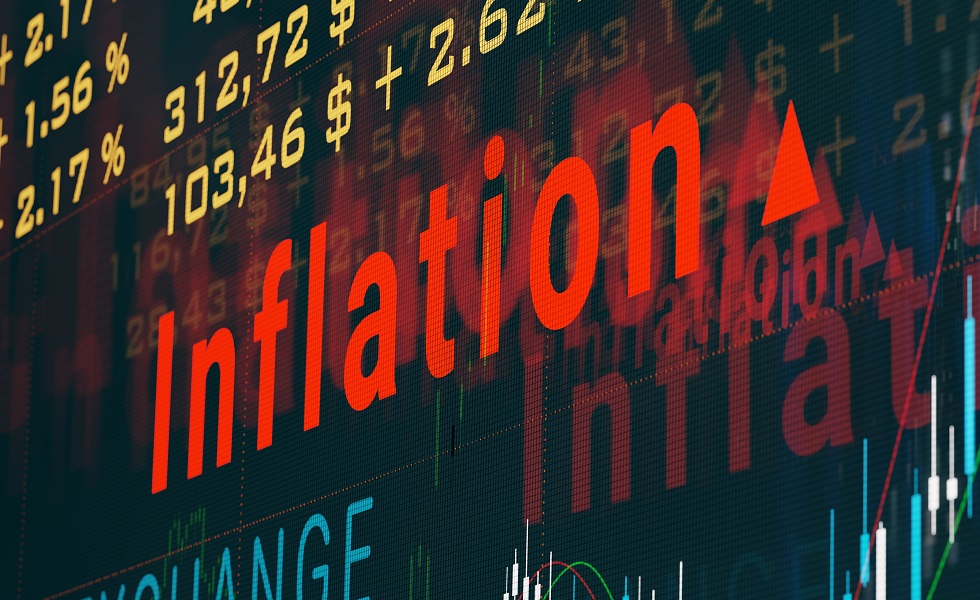Swissquote: British inflation dips to 1.7% in September
Swissquote: British inflation dips to 1.7% in September

Europe’s biggest company revealed its results a day earlier – by accident – and the results were not good at all. ASML booked about half of the orders pencilled in by analysts last quarter as demand outside AI continued to struggle. The company also cut its 2025 forecast and more details are to come, as the company wasn’t supposed to release earnings yesterday. Needless to say that ASML shares plunged 16% yesterday – the most in 26 years. The selloff dragged the Stoxx 50 down by 1.87%.
More bad news: stimulus measures that China announced by the end of September could’ve miraculously shown in the Q3 results of LVMH – which reported after the market close – but they did not. The Chinese didn’t rush to pop the champagne and to buy Vuitton bags as soon as they heard that China would be cutting the interest rates – among other measures – to reverse the fortunes of the country. LVMH results came as an early hint that the luxury item makers will have to wait longer before uncorking the champagne, on their side.
And the US’ advanced chipmakers didn’t have a good session, either, but for different reasons. The US announced yesterday that it will restrict the advanced chip exports from Nvidia to AMD to countries that do have connections to Gulf countries, for national security reasons as war in the Middle East is taking an uglier turn by the day. And well, the gulf countries are thirsty for AI and have deep pockets. The news resonated loudly across the chipmakers. Nvidia dived more than 4.50% from near record, AMD dropped more than 5%, and VanEck’s Semiconductor ETF took a 5% dive. Nasdaq 100 gave back 1.37%, as the S&P500 retreated 0.76% thanks to big US banks’ better-than-expected Q3 results.
Elsewhere, crude oil sold off heavily for the second session on relied that Israel is planning to hit Iran’s military rather than its energy structure. The barrel of US crude tipped a toe below the $70pb level and rebounded to close the session with a 2% loss. US crude trades a touch below the $71pb this morning, the MACD index on the daily chart just turned negative supporting the idea that oil is back to its bearish trend. Resistance is seen near $72pb, the major 38.2% Fibonacci retracement on summer retreat. The Chinese struggle and deteriorating global demand outlook are the major catalysts for potentially deeper losses. A move below the $70pb should pave the way to $65/67pb range.
Speaking of energy, Microsoft has announced – a few weeks earlier – that it would team up with Constellation energy to bring some nuclear reactors in the Three Mile Island back to life to satisfy its growing thirst for energy as AI is very, very energy-intensive, remember. Yesterday, Google announced that it’s investing in the development of next generation nuclear power by backing a company that’s building small modular reactors, from which it will buy energy when the sites start supplying energy.
Capital inflows into nuclear have been stagnating for the past decade, but started gaining momentum since the war in Ukraine raised the urge of a rapid transition toward alternative energy sources that solar and wind alone can’t satisfy as our energy demands are rising very rapidly with AI. The investment world is turning toward the nuclear option: VanEck’s Uranium and Nuclear ETF is up by 73% since the war in Ukraine started and up by 62% since the beginning of 2023, when ChatGPT joined our lives. And the nuclear outlook is increasingly positive.
In the FX
The US dollar index consolidated gains yesterday near the 100-DMA and half-way on the summer selloff. The EURUSD extended losses below the 1.09 mark and the euro bears are eyeing a further retreat toward and below the 200-DMA, near 1.0875. The European Central Bank (ECB) meets tomorrow and is expected to announce another 25bp cut. The headline inflation in the Eurozone lately dipped below the 2% policy target and European economies are struggling with Germany thought to be in mild recession. The only thing that could hold the ECB back from a dovish cut would be sticky core and services inflation. If that’s the case, the ECB could deliver a hawkish cut. In that case, we could see a rebound in the EURUSD but given the deteriorating fundamentals of the Eurozone and the resilience of the US economy, the single currency could and should lose more ground against the greenback.
And speaking of inflation and Europe, inflation in Britain not only fell below 2% in September but came in significantly lower than expected (1.7%y-o-y vs 1.9% expected). Although core inflation remains sticky near 3.2%, that number also surprised to the downside. British inflation’s downward trajectory, combined with slowing wages growth, emphasizes Bank of England (BoE) Governor Andrew Bailey’s latest comments that the bank will get ‘more aggressive’ on its rate policy. That meaningful dovish shift in BoE stance, backed by inflation data, will likely send Cable back below the 1.30 level.
